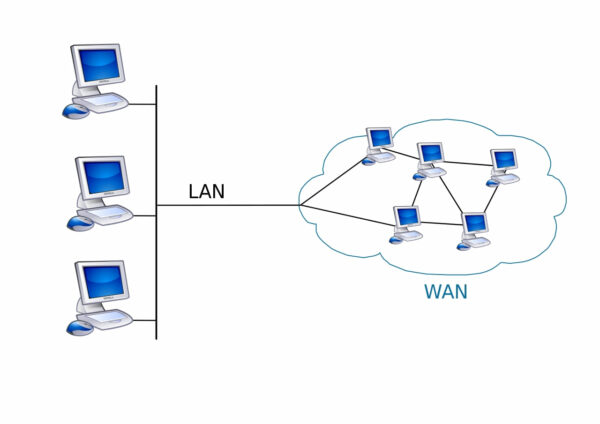✅ Last checked on
In today’s rapidly evolving business landscape, seamless connectivity is a cornerstone of success. Organizations, irrespective of their size, require reliable and efficient networks to connect geographically dispersed locations, facilitate data transfer, and enable robust communication. This is where Understanding Wide Area Network (WAN) for Efficient Connectivity comes into play.
Let’s delve into the world of WAN, exploring its components, benefits, and how it transforms business communication.
Introduction: Navigating the Terrain of WAN

In the realm of networking, a Wide Area Network (WAN) is a critical infrastructure that spans a large geographic area, connecting multiple local area networks (LANs) and data centers. WAN serves as the digital highway that facilitates the exchange of data, applications, and resources across various locations, enabling businesses to function seamlessly.
Understanding Wide Area Network (WAN) for Efficient Connectivity is the key to unlocking enhanced communication and collaboration capabilities.
Benefits of WAN: Optimizing Business Communication
WAN offers a plethora of advantages that directly contribute to optimizing business communication and operations. Here’s a look at some of the key benefits:
Improved Connectivity and Accessibility
WAN provides a reliable and high-speed connection between different branches, remote offices, and data centers. This improved connectivity ensures that employees across various locations can access centralized resources, databases, and applications with minimal latency, fostering efficient collaboration.
Enhanced Data Sharing
Efficient data sharing is paramount in today’s interconnected world. WAN enables seamless sharing of large files and critical data between different sites, eliminating bottlenecks and ensuring that the right information reaches the right people at the right time.
Centralized Management
Understanding Wide Area Network (WAN) for Efficient Connectivity allows centralized management of network resources and security protocols. This centralization streamlines maintenance, updates, and security measures, reducing the need for on-site IT personnel at every location.
Cost Savings
Consolidating network resources through WAN often leads to cost savings. By centralizing applications, storage, and backup solutions, businesses can optimize resource utilization and minimize redundant infrastructure.
Scalability
As businesses grow and expand, so do their networking needs. WAN offers scalability, allowing organizations to easily add new sites or locations to the network without significant reconfiguration.
Disaster Recovery
WAN plays a crucial role in disaster recovery strategies. Data replication and backup across geographically dispersed locations ensure that even in the event of a catastrophe, critical information remains accessible and intact.
Components of WAN: Building Blocks of Connectivity
Understanding the components that constitute a Wide Area Network (WAN) is essential to comprehend its functioning and potential.
Routers and Switches
Routers and switches are fundamental components of a WAN. Routers direct data traffic between different locations, optimizing the path for efficient transmission. Switches, on the other hand, manage local traffic within each location.
Transmission Lines
Transmission lines, such as leased lines, optical fibers, and satellite links, form the physical infrastructure of WAN. These lines ensure data travels securely and swiftly between distant sites.
Protocols and Security Measures
Protocols, like MPLS (Multiprotocol Label Switching), ensure data packets reach their intended destinations accurately. Security measures, including firewalls and encryption, safeguard data during transmission.
Data Centers
Data centers house critical applications, databases, and resources. They play a pivotal role in WAN by serving as hubs for data storage and processing.
Understanding Wide Area Network (WAN) for Efficient Connectivity: Maximizing Potential
Understanding Wide Area Network (WAN) for Efficient Connectivity is more than just comprehending its technical aspects; it’s about harnessing its potential to transform business communication and collaboration. By leveraging its benefits and components, organizations can establish a robust and future-ready network infrastructure that fuels growth and success.
FAQs
How does WAN differ from LAN?
WAN connects geographically dispersed locations, often across cities or countries, while LAN (Local Area Network) serves a smaller area, such as within a single building or campus.
Can small businesses benefit from WAN?
Absolutely. WAN can be tailored to the needs of small businesses, enabling cost-effective connectivity between branches and remote employees.
Is WAN secure?
Yes, WAN can be made secure through encryption, firewalls, and intrusion detection systems. Implementing security measures is crucial to protect sensitive data during transmission.
What role does cloud computing play in WAN?
Cloud computing complements WAN by providing scalable and on-demand resources accessible from anywhere, aligning well with the distributed nature of WAN.
How does WAN impact data transfer speed?
WAN speed depends on factors like the type of transmission lines used, network congestion, and distance between sites. However, WAN technologies continue to evolve, offering higher speeds.
Can WAN improve customer service?
Absolutely. WAN enables seamless communication between customer service teams across different locations, ensuring quick access to customer data and timely issue resolution.
Conclusion: Embrace the Power of Efficient Connectivity
In the realm of modern business, Understanding Wide Area Network (WAN) for Efficient Connectivity is no longer optional; it’s a strategic imperative. By establishing a robust WAN infrastructure, organizations can enhance communication, collaboration, and operational efficiency, ultimately driving growth and success. So, embrace the power of WAN and unlock a world of possibilities for your business.